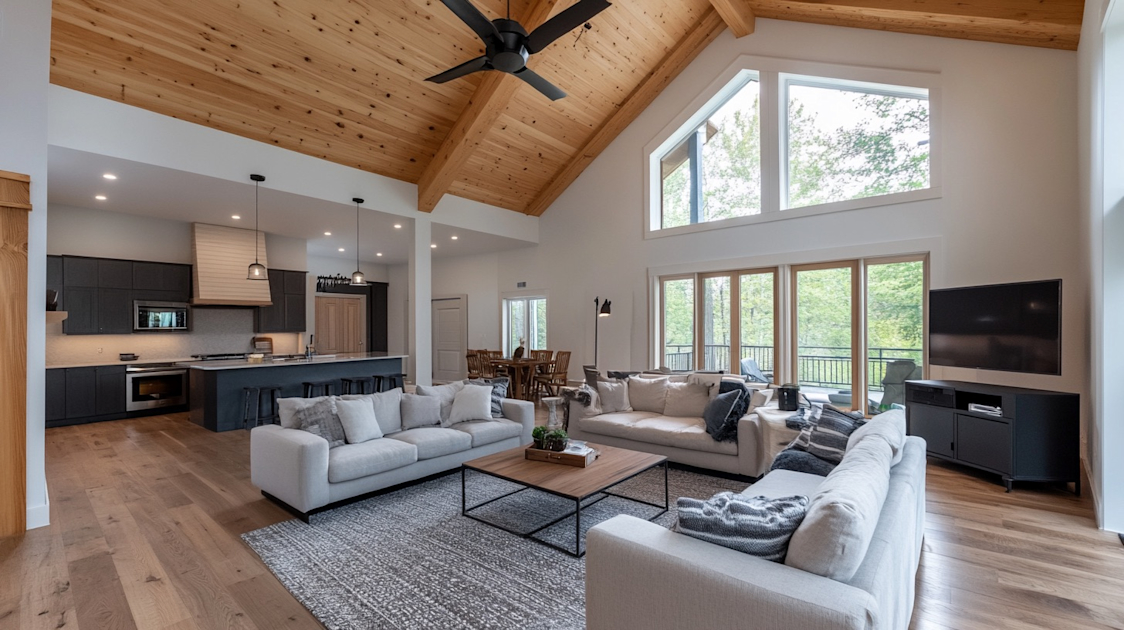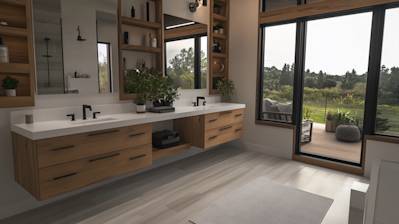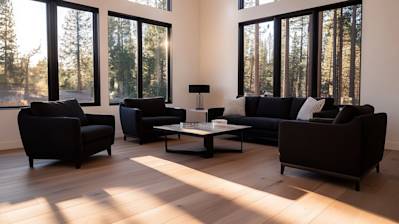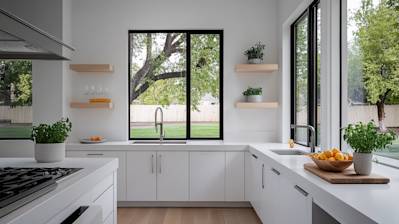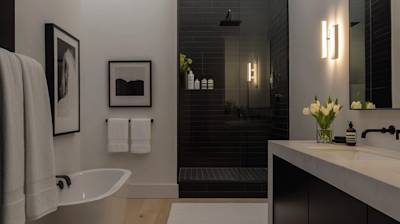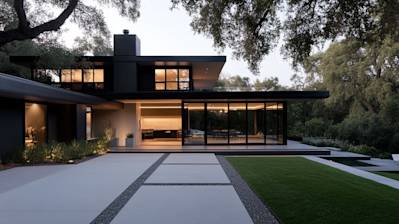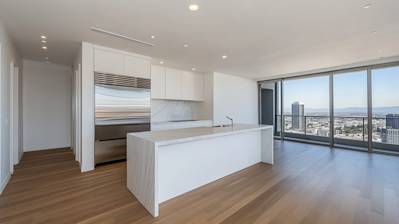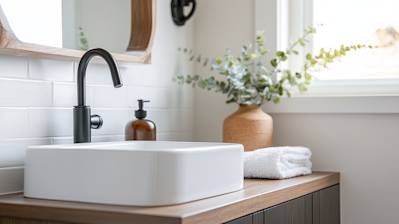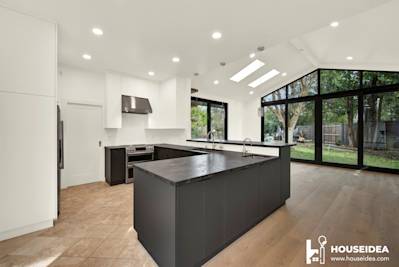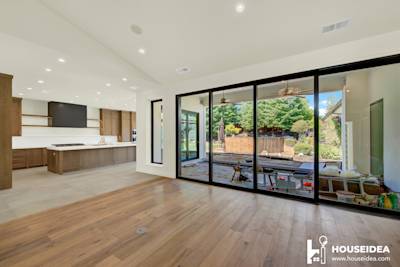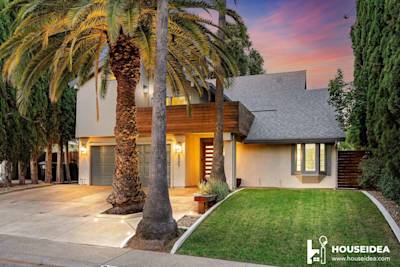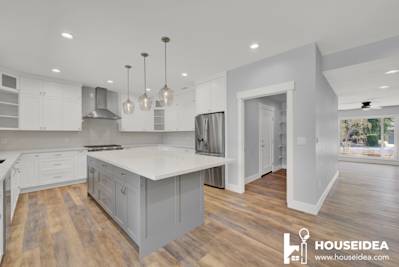In the world of architectural design, few elements create as profound an impact as cathedral ceilings. They introduce a new level of sophistication, while drastically changing the overall feel of the space. This article will delve into the concept of cathedral ceilings, their incorporation in home design, and how they can reimagine your living environment.
What are Cathedral Ceilings?
Cathedral ceilings, also recognized as vaulted ceilings, are high, sloping ceilings that create a feeling of grandeur in a room. They many times rise higher than the standard eight-foot ceiling cap and often copy the roof's pitch, hence the term 'cathedral.'
This ceiling type has been integrated into architectural designs for centuries, with early examples visible within church and cathedral structures, hence the name "cathedral ceilings." Let's explore the features that make cathedral ceilings such a great and unique choice.
Key Features of Cathedral Ceilings
The features that set cathedral ceilings apart include:
Height and Slope: Cathedral ceilings are characterized by their high elevation and distinctive sloping design. This feature creates an expansive feel.
Architectural Detailing: Cathedral ceilings are not just about height—they are also about detail. This design often incorporates exposed wooden beams, trusses, or other architectural embellishments.
Lightness and Space: These ceilings make a space look more expansive, giving it a light and airy feel.
The Modern Twist to Cathedral Ceilings
Modern cathedral ceilings offer a fresh twist to the traditional design. Modernized versions now integrate indirect lighting, contemporary detailing, and a range of innovative styles, pushing the boundaries of architectural design.
Following are some of the popular styles:
Rustic: This style utilizes natural wood with exposed beams.
Modern Minimalist: This approach incorporates clean lines and neutral colors.
Industrial: This design uses exposed brickwork and metal accents.
The Impact of Cathedral Ceilings on Room Aesthetics
Cathedral ceilings produce a dramatic effect that elevates the aesthetics of a room. Here's how:
Vertical Space Enhancement
The most apparent characteristic of cathedral ceilings is how they magnify vertical space. The pitched ceilings can considerably heighten the roof, creating a spacious feeling, making the room seem grander and more open.
Light and Airy Feel
With their increased height, cathedral ceilings permit more natural light to enter a room. This abundance of light can create a bright, airy, and cheerful atmosphere.
Architectural Finesse
Cathedral ceilings, with their intricate architectural details, imitate the grandeur of historic castles and cathedrals. Thus, they can bring an elevated sense of fineness and luxury to your home.
Making the Most of Your Cathedral Ceilings
Cathedral ceilings are a dramatic architectural statement that needs the right decor and design elements to maximize their effect. Consider the following tips to optimize your cathedral ceilings:
Choose Light Colors: A lighter color palette can make space look larger and brighter.
Consider Lighting Options: Due to the height, cathedral ceilings may require more innovative solutions to illuminate your space fully.
Highlight Architectural Details: Emphasize the unique features of the ceiling, such as beams or trusses, to draw attention to the architecture.
Use High Windows or Skylights: Maximise the advantage of the ceiling height by incorporating tall windows or skylights, allowing more natural light to enter and amplifying the room's open feel.
Frequently Asked Questions about Cathedral Ceilings
Are Cathedral Ceilings More Energy Efficient?
Despite their aesthetic appeal, cathedral ceilings are not synonymous with energy efficiency. Their vast height makes it quite challenging to keep the desired temperature in the room, which might increase your energy consumption. However, with proper insulation, you can mitigate some of this energy loss.
How Are Cathedral Ceilings Constructed?
Cathedral ceilings are typically constructed by removing the attic space of a home. The inside ceiling is then lifted to match the roof's slope. This way, instead of having a flat ceiling and separate roof slope, you get a continuous, sloped ceiling that meets at the center or 'peak' of the room.
Can Lights Be Installed in Cathedral Ceilings?
Yes, you can definitely install lights in cathedral ceilings. Recessed lighting or track lighting works well with the design of a cathedral ceiling. As these ceilings are higher than regular ones, it’s crucial to adequately plan your lighting to provide proper illumination of your space.
Do Cathedral Ceilings Require More Maintenance?
Yes, due to their height and design, cathedral ceilings could require more maintenance than typical flat ceilings. Tasks like changing light bulbs, cleaning lighting fixtures, and dusting could be more challenging and might need professional help.
How do Cathedral Ceilings Affect Room Acoustics?
Cathedral ceilings can significantly affect the acoustics of a room due to their volume and shape. Sound tends to reverberate in these high, sloped ceilings, which can sometimes lead to an echo effect. However, the exact acoustic effects would largely depend on factors such as the materials used and the room's size.
Can a Ceiling Fan Be Installed on a Cathedral Ceiling?
Installation of a ceiling fan on a cathedral ceiling is certainly possible. However, it is critical to find a fan that is the right size for the space to ensure proper airflow and efficiency. Also, due to the height of the ceiling, an extended downrod is typically required.
Can Cathedral Ceilings be painted?
Yes, cathedral ceilings can definitely be painted. However, painting these high ceilings may prove to be more challenging than painting a traditional flat ceiling and might require professional assistance. Lighter shades are generally preferred because they can help make the room appear brighter and more open.
Pros of Cathedral Ceilings
Unique Aesthetic Appeal
Cathedral ceilings can significantly increase the appeal of a room, making it appear more grand and spacious. They provide an architectural element that is both unique and eye-catching, setting a tone of elegance and grandeur.
Natural Lighting
With cathedral ceilings, there's more space for larger windows or even skylights. This allows more natural light to stream into your home, which can save you energy during daylight hours by reducing the need for artificial lighting. This makes the space feel bright, sunny, and welcoming.
Increased Selling Value
If you're considering selling your property in the future, having cathedral ceilings could potentially increase its value. Many prospective buyers view cathedral ceilings as a luxury feature, which might make your house more attractive to them.
Versatility in Decor
High ceilings give you a lot more vertical space to play with decoratively. If you're a fan of tall ornamental plants, large bookshelves, or oversized artwork, a room with a cathedral ceiling provides the perfect Canvas. This also allows for unique lighting options, such as chandeliers or hanging lamps.
Effective Heat Management
Because hot air naturally rises, cathedral ceilings can help manage the distribution of heat effectively in colder seasons. By allowing the hot air to move upwards, living spaces can be less stuffy and more comfortable.
Cons of Cathedral Ceilings
High Energy Costs
While cathedral ceilings can manage heat effectively in cold weather, they can also lead to increased energy bills. This is because higher ceilings require more energy to heat the room adequately during the colder months of the year. Similarly, in summer, more power is needed to cool the air.
Difficult Maintenance
Cathedral ceilings can make cleaning and maintenance more challenging. Cleaning tasks as simple as changing a light bulb could become more difficult and possibly require specialized equipment. If repairs or redecoration is needed for the ceiling, the expenses may also increase due to the height and the requirement for specialized labor and equipment.
Acoustical Issues
Rooms with cathedral ceilings can sometimes have unusual acoustic characteristics. Sounds may echo more, which can be an issue if you're planning to use the area for practicing instruments or for a home theater setup.
Limited Wall Storage
Because they start higher up, cathedral ceilings limit the amount of usable wall space. You'll have less room for second-story storage or for hanging pictures and paintings.
Risk of Feeling Uncomfortable
While cathedral ceilings can make a room appear larger, they can sometimes create an uncomfortable or cold atmosphere due to their grandness. The room could feel less cozy and more like a public space rather than a private one.
Increased Construction Cost
If you're building from scratch or considering remodeling your home to incorporate cathedral ceilings, keep in mind that it requires more materials to create. This means a higher construction cost compared to standard flat ceilings.
Conclusion
Cathedral ceilings certainly come with a unique set of pros and cons. They add a level of elegance and grandeur to any room and provide plenty of decorating opportunities and natural light. However, these benefits come with higher energy, construction, and maintenance costs. One also needs to consider the impact on acoustics and storage space. Ultimately, the decision for or against cathedral ceilings will depend on personal taste, budget, and specific living requirements.
Summary
So, it's safe to say that cathedral ceilings aren't just for cathedrals anymore. They've become a popular feature in homes as they tend to give rooms an open, airy feel. Not only do they add a touch of luxury to any room they're in, but they can also increase the value of your home. Cathedral ceilings provide an opportunity to create a dramatic and unique aesthetic within a space, making it a memorable focal point.
Naturally, cathedral ceilings demand more energy for heating and cooling because of their large volume. However, if you fancy high ceilings, there are ways around this - for example, you could install a ceiling fan to promote energy efficiency. Further, despite being challenging to clean and maintain due to their height, the impressive aesthetic appeal of cathedral ceilings can often make this trade-off worthwhile for homeowners.
On the flip side, their wide span might not please a minimalist, but their grand architecture would surely be a hit amongst those who appreciate its charm. Ultimately, whether or not cathedral ceilings are right for you would largely depend on the look and feel you wish to achieve in your space. As with any design decision, it's all about assessing your preferences and needs, and whether the advantages outweigh any potential drawbacks.
About HouseIdea
Welcome to HouseIdea - our wonderful home improvement and interior design company that's been serving the fine folks of Sacramento, CA like you for years. We're happy to help, whether you have a tiny room that needs a touch of charm or a large estate waiting to be transformed into a dream space. Our super talented team of designers never fails to deliver unique style infused with comfort. So, if you are searching for a partner in giving your home a breath of fresh air, look no further. Let's make your house a well-designed home together.
Tags: cathedral, ceilings, architecture,

